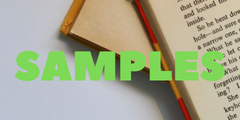According to Jacob Willer, a painter and art critic in a recent article titled “What Happened to the Art Schools?”, most of today’s fine art degrees are inadequate in producing great artists because they fail to teach the required foundational skills. He claims that painting and drawing are viewed as mere ceremonial adornments in the current art programs.
After visiting several art schools across the United States, Willer observed that while some talented students caught his eye, the majority lacked basic proficiency in artistic skills. He encourages art enthusiasts to look through the University College London collections to see the high-quality paintings produced in the Slade School of Fine Art during the first half of the previous century as evidence of the significant decline in art education.
Willer recommends that art education programs focus more on traditional methods of instruction, such as drawing from life and honing craft skills, to restore art practices to their past glory. However, he concedes that since most current art instructors lack such qualifications, an alternative method for students would be to learn by studying the works of old masters like Rembrandt and Titian.
Changes in the teaching of fine arts have indeed evolved over recent decades. While tertiary art schools and polytechnics began awarding art and design diplomas in the 1960s, the 1992 Further and Higher Education Act transformed these schools into universities that face similar issues, such as tuition fee increases.
Unlike Willer, Michael Archer, a professor of art at Goldsmiths University, believes that current schools offer a more inclusive approach to art education, allowing students to explore different cultures and traditions. A return to technical drawing only would be shortsighted and too rigid in approach.
Similarly, many instructors, including programme director Alex Schady of Central Saint Martins, believe it is essential to be inclusive using less exclusive materials students can afford.
Although Richard Talbot, head of fine art at Newcastle, supports exposure to multiple techniques, he still focuses on fostering a foundational technical education while encouraging open exploration. Various instructors and artist, however, say that offering a diversity of media shouldn’t outrank technical instruction and observation-based drawing.
For instance, artist and instructor Andy Pankhurst states that working from observation has been actively discouraged. Pankhurst has encountered students who were told they would become vegetables if they continued to learn general drawing skills.
Through the continuous assessment of the current practices, art programs need to find a balance between technical education and the openness to explore diverse mediums and trends.
Many aspiring artists start their journey by enrolling in foundation courses to acquire technical skills. Johnny O’Flynn, a graduate of the RDS foundation course, found the various exercises and workshops offered to be beneficial. However, since he enrolled as a fine art student at Newcastle, he has been enjoying a more relaxed learning environment. O’Flynn believes that most art schools value independence and creativity, rather than strict observation.
Essentially, this discussion revolves around the purpose of art. Is an artist’s technical prowess significant? For Archer, it is more important to offer a teaching structure that complements the diverse backgrounds of the students. The current generation of art students comes from various cultures, countries, and has a range of experiences that require a more liberal approach. Adhering to the traditional British teaching methodologies of the past centuries would not be useful in today’s context. In contrast, art schools that offer flexible learning environments and innovative teaching approaches are more likely to attract the best applicants.



